Showing 21–25 of 61 results
-
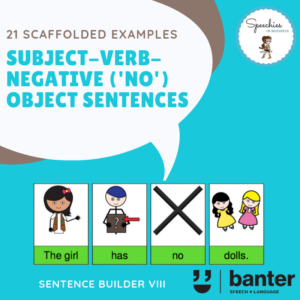
$5.99 including GST
This is the eighth in our series of sentence builders, focusing on Subject-Verb-Negative (“no”)-Object constructions, e.g. “The boy has no pets”.
Typically developing children usually acquire this sentence structure at around the age of 30-36 months of age, although people who are learning English as a second language and/or have a communication disorder may struggle to grasp the pattern.
This no-preparation pack is designed to help support people who need help with these sentences, and features high frequency, present tense verbs to help stimulate oral language development.
-
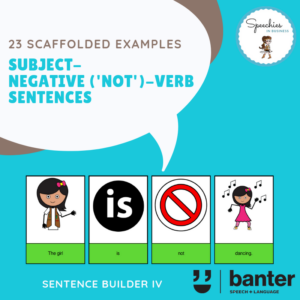
$5.99 including GST
This is the fourth in our series of sentence builders, focusing on Subject-Negative (“not”)-Verb constructions, e.g. “The boy is not singing”.
Typically developing children usually acquire this sentence structure at around the age of 2-2 1/2 years of age, although people who are learning English as a second language and/or have a communication disorder may struggle to grasp the pattern.
This no-preparation pack is designed to help support people who need help with these sentences, and features high frequency, present tense verbs to help stimulate oral language development.
-
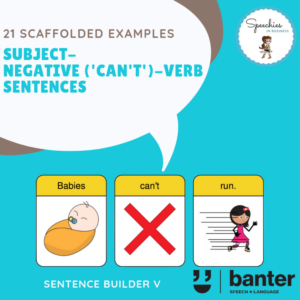
$5.99 including GST
This is the fifth in our series of sentence builders, focusing on Subject-Negative (“can’t”)-Verb constructions, e.g. “The boy can’t sing”.
Typically developing children usually acquire this sentence structure at around the age of 2-2 1/2 years of age, although people who are learning English as a second language and/or have a communication disorder may struggle to grasp the pattern.
This no-preparation pack is designed to help support people who need help with these sentences, and features high frequency, present tense verbs to help stimulate oral language development.
-
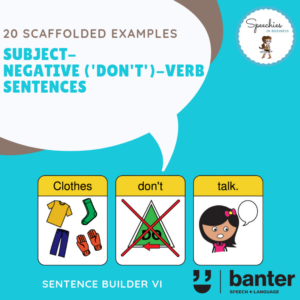
$5.99 including GST
This is the sixth in our series of sentence builders, focusing on Subject-Negative (“don’t”)-Verb constructions, e.g. “Buses don’t swim”.
Typically developing children usually acquire this sentence structure at around the age of 2-2 1/2 years of age, although people who are learning English as a second language and/or have a communication disorder may struggle to grasp the pattern.
This no-preparation pack is designed to help support people who need help with these sentences, and features high frequency, present tense verbs to help stimulate oral language development.
-
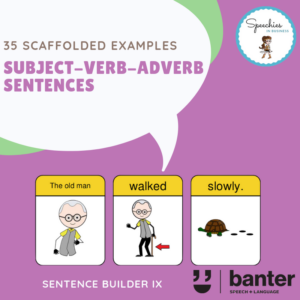
$5.99 including GST
In this 21-page no preparation pack of scaffolded sentences, we target the very common Subject-Verb-Adverb structure. Most typically developing children acquire this pattern at about the age of 24-30 months. But many people – including people learning English as a second language, and people with developmental language disorders, take longer and need practice to acquire it.





